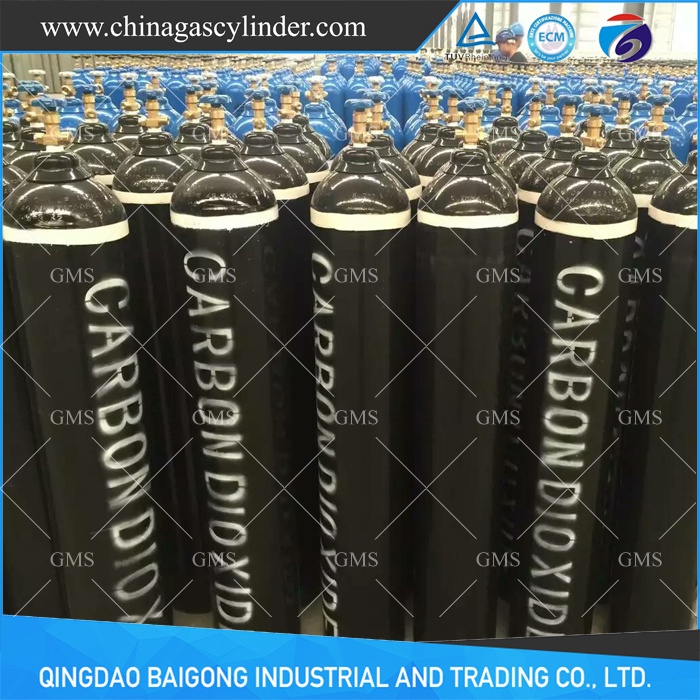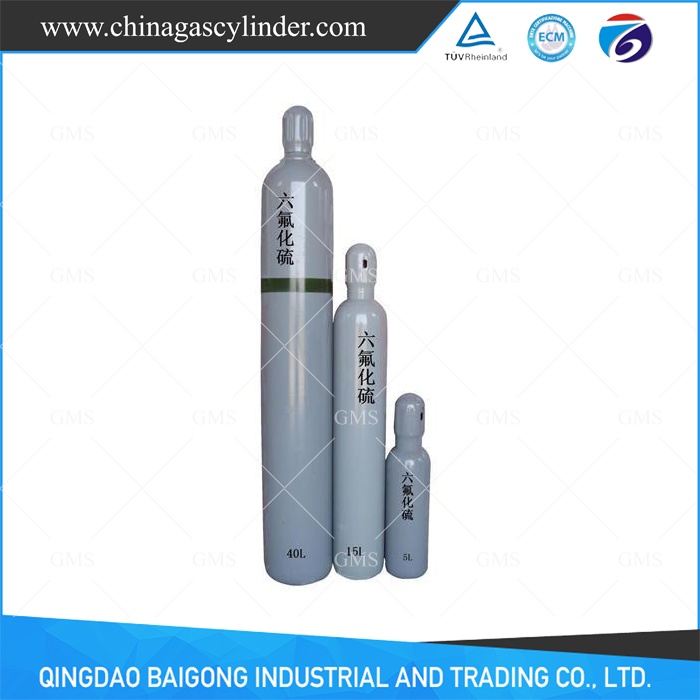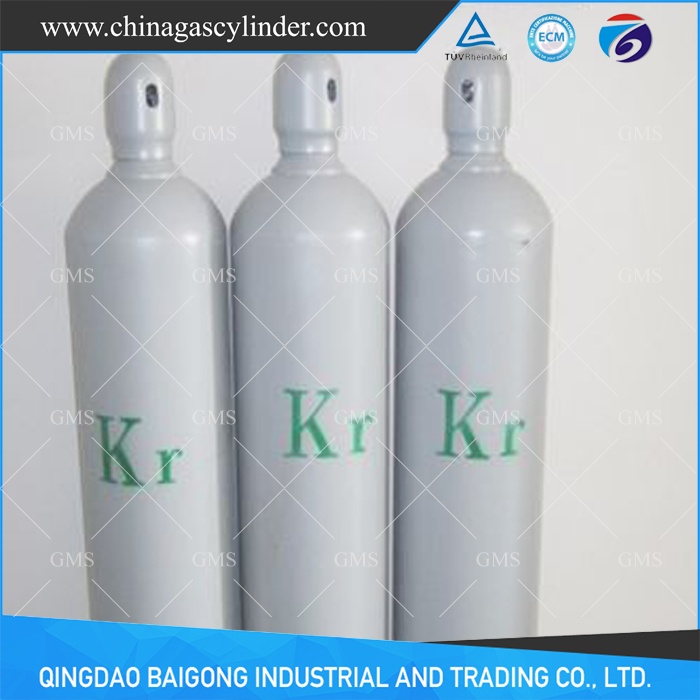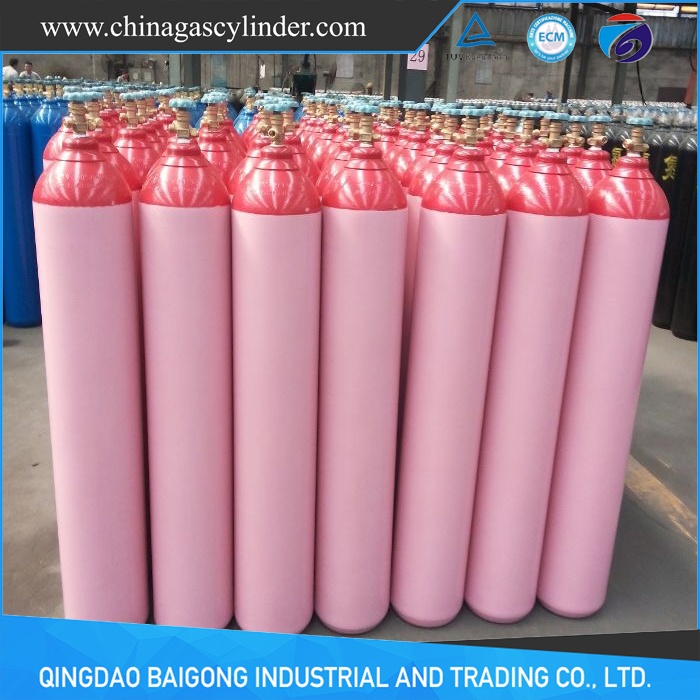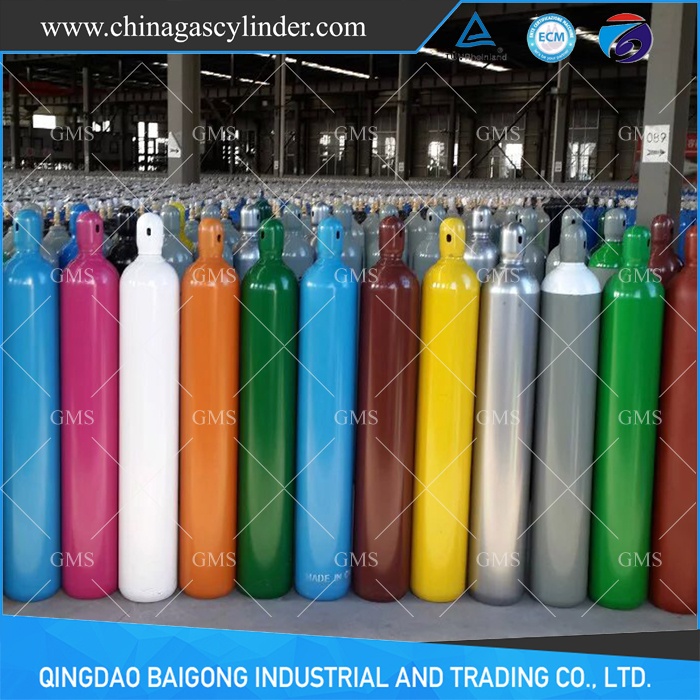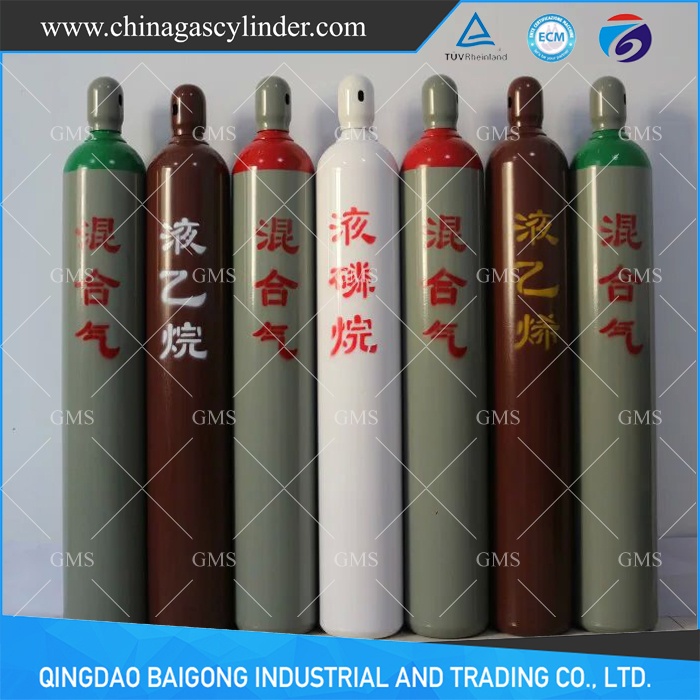Products Category
Contact Us
Name: Lisa Liu
Tel: 0086-0532-87670823
Fax: 0086-0532-80687027
Mobile: 0086-13730919161
E-mail: chinagascylinder@163.com
QQ:
1722660976
QQ:
2100467747
QQ:
1296442798
QQ:
2376763120
| Details: |
PRODUCT NAME: Carbon Dioxide
CHEMICAL NAME: Carbon Dioxide
FORMULA: CO2 SYNONYMS: Carbonic Anhydride, Carbonic Acid Gas, Carbon Anhydride
CONCENTRATION: Carbon dioxide is sold as pure product > 99.9%.
CAS NUMBER: 124-38-9
EMERGENCY OVERVIEW
Carbon dioxide is a nonflammable liquefied compressed gas packaged in cylinders under its own vapor pressure of 838 psig at 70℉ (21.1℃). High concentrations can cause rapid suffocation and can also increase respiration and heart rate. Contact with liquid may cause frostbite. Avoid breathing gas. Self contained breathing apparatus (SCBA) may be required by rescue workers.
STORAGE: Cylinders should be stored upright in a well-ventilated, secure area, protected from the weather. Storage area temperatures should not exceed 125℉ (52℃). Storage should be away from heavily traveled areas and emergency exits. Avoid areas where salt or other corrosive materials are present. Valve protection caps and valve outlet seals should remain on cylinders not connected for use. Separate full from empty cylinders. Avoid excessive inventory and storage time. Use a first-in first-out system. Keep good inventory records.
HANDLING: Use a suitable hand truck for cylinder movement. Never attempt to lift a cylinder by its valve protection valve cap. Never apply flame or localized heat directly to any part of the cylinder. Do not allow any part of the cylinder to exceed 125 °F (52 °C). High temperature may cause damage to cylinder and/or premature failure of pressure relief device which will result in venting of cylinder contents. If user experiences any difficulty operating cylinder valve discontinue use and contact supplier. Never insert an object (e.g., wrench, screwdriver, pry bar, etc.) into valve cap openings. Doing so may damage valve causing a leak to occur. Use an adjustable strap wrench to remove over-tight or rusted caps. Only the proper CGA connections should be used, never use adapters. Use piping and equipment adequately designed to withstand pressures to be encountered. If liquid product is being used ensure steps have been taken to prevent entrapment of liquid in closed systems. The use of pressure relief devices may be necessary. Use a check valve or other protective apparatus in any line or piping from the cylinder to prevent reverse flow. Carbon dioxide is compatible with all common materials of construction. Pressure requirements should be considered when selecting materials and designing systems. Use a “FULL”, “IN USE”, and “EMPTY” tag system on cylinders. This will reduce the chances of inadvertently connecting or operating the wrong cylinder. APPEARANCE, ODOR AND STATE: Colorless and odorless. A slightly acid gas. It is felt by some to have a slight pungent odor and biting taste.
MOLECULAR WEIGHT: 44.01
GAS DENSITY (at 70 °F (21.1°C) and 1 atm): 0.1144 lb/ft3 (1.832 kg/m3)
VAPOR PRESSURE (70 °F (21.1°C)): 838 psig
SPECIFIC GRAVITY (Air =1): 1.522
SPECIFIC VOLUME (70 °F (21.1°C) and 1 atm): 8.74 ft3/lb (0.5457 m3/kg)
BOILING POINT: -109.3°F (-78.5°C)
TRIPLE POINT (At 60.4 psig): -69.9°F (-56.6°C)
SOLUBILITY IN WATER (Vol./Vol. at 68°F (20 °C)): 0.90
DOT SHIPPING NAME: Carbon dioxide
HAZARD CLASS: 2.2 (Nonflammable Gas)
IDENTIFICATION NUMBER: UN1013
PRODUCT RQ: None
SHIPPING LABEL(s): Nonflammable gas
PLACARD (when required): Nonflammable gas
SPECIAL SHIPPING INFORMATION: Cylinders should be transported in a secure upright position in a well ventilated truck. Never transport in passenger compartment of a vehicle. |
| Related Products : |





 Seamless Steel Gas Cylinder
Seamless Steel Gas Cylinder

